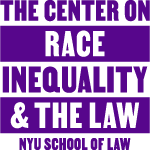Among the critical drivers of inequality, racial segregation, and concentrated poverty in our cities is the development of transportation policy and infrastructure. The late United States Congressman John Lewis once wrote, “the legacy of Jim Crow transportation is still with us. Even today, some of our transportation policies and practices destroy stable neighborhoods, isolate and segregate our citizens in deteriorating neighborhoods, and fail to provide access to jobs and economic growth centers.” The benefits and burdens of all aspects of our transportation system – highways, roads, bridges, sidewalks, and public transit – have been planned, developed, and maintained to segregate people of color, making it difficult for them to take advantage of society’s opportunities or to access employment, education, and economic resources.
Today, the country’s transportation system continues to be planned, funded, and operated in ways that restrict the ability of low-income people and communities of color to move through the world freely; limit access to jobs, health, and opportunity along race and class lines; and force Black and brown communities to bear a disproportionate share of environmental harms. While the country prioritizes heavy investments in highways and suburban commuter rail systems, communities of color are underserved by chronically underfunded, unreliable—and sometimes nonexistent—public transportation systems. To make matter worse, an examination of the routes that residents of low-income communities of color must take to reach the closest buses and trains reveals that those communities even lack proper sidewalks and crosswalks to facilitate pedestrian travel.
In the summer of 2005, the lack of transportation investments in Black communities in New Orleans contributed to disastrous emergency evacuation responses and death in the Lower Ninth Ward of New Orleans in the aftermath of Hurricane Katrina. In 2020, dysfunctional transportation policy contributed to the disproportionate impact of COVID-19 in Black communities. Numerous studies confirm that low-income communities of color disproportionately lack access to reliable transportation and suffer from the pollution of roads and highways running through their communities in ways that increase the risk of contracting COVID-19.
The Center’s Transportation Justice Work
Fighting for Racial Justice in Syracuse, New York Highway Project
Today, the interstate highway system is on the verge of transformational change as aging highways around the country are crumbling or insufficient to meet growing demand and must be rebuilt or replaced. The possibility of significant infrastructure development offers an opportunity to redress some of the harm caused by the interstate highway system, to strengthen impacted communities, and to advance racial equity.
The Center is working with local advocates in Syracuse, New York to elevate community voices and ensure racial equity in connection with the anticipated destruction of an elevated portion of Interstate 81. As with many other highways around the country, construction of I-81 in the 1950s decimated the 15th Ward, a primarily Black community, while also prompting white flight to the suburbs. In the decades that have followed, I-81 has continued to serve as a physical and psychological barrier dividing the Black community from the rest of Syracuse and contributing to pockets of intense racial segregation and concentrated poverty. The pending removal of I-81’s elevated portion presents Syracuse with a unique opportunity to redress the impact of the original construction and ensure that the injustices surrounding the original construction of I-81 and the destruction of the 15th Ward are not repeated.
Exploring the Transformational Potential of Racial Equity Impact Studies
Racial equity impact studies systematically analyze how racial groups will be affected by a proposed action, policy, or practice. Although they have been most frequently proposed and adopted in the context of reforming the criminal legal system, racial equity impact studies have the potential to unearth racial inequities in many systems, and to bar or revise harmful policies before they wreak havoc on communities of color.
The Center is engaged in research and advocacy to explore the transformational potential of racial equity impact studies on infrastructure development projects. Racial equity impact studies would allow jurisdictions to think broadly, and in advance of construction, about the damage infrastructure development projects could have on impacted communities, as well as the range of interventions available to move forward equitably.
Toolkits for Community Advocacy
Throughout the country, community organizations engage in advocacy, litigation, public education, and other strategies to advance community equity and build power for their communities. But often these organizations face severe structural disadvantages, as they may lack the resources and technical expertise of their opponents. To support communities and advocates fighting for more equitable community conditions, the Center publishes advocacy “toolkits” filled with helpful resources regarding strategies and approaches to address the specific issue in question. For example, highway construction has often had a racially disparate impact, with the first wave of highways in the 1950s and 1960s demolishing many neighborhoods of color and displacing thousands of residents. Accordingly, the Center has produced a toolkit that considers what lessons can be learned from these past struggles and how community advocates in the present day can intervene in the highway planning process to prevent the harms of the past from being revisited on their communities.
